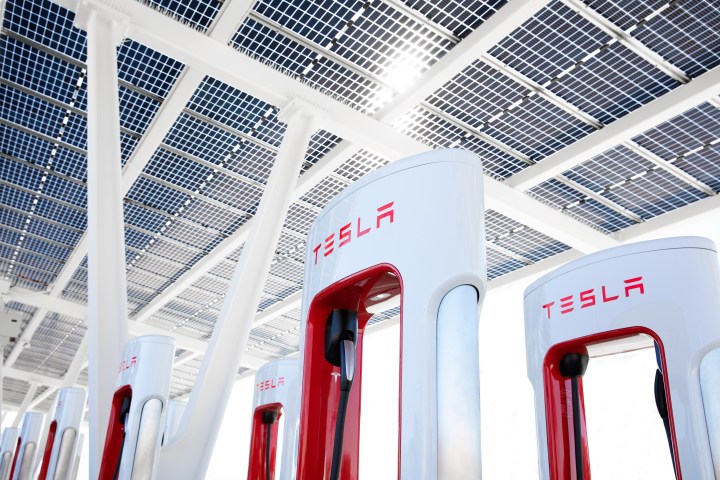
General Motors and Ford are getting Supercharger access quicker than we thought. According to a Tesla employee who recently spoke at a city planning committee meeting about a new Supercharger station, Ford and GM will get Supercharger access as early as 2024.
Almost all major automakers have announced that they’ll switch to NACS (the same Tesla connector that Tesla uses) by 2025 — meaning that we should start to see non-Tesla cars with the connector sometime in mid-2024. Of course, it’s unlikely Ford and General Motors cars with the connector will be out by February — however, existing cars with a CCS connector may be able to take advantage of Superchargers with an adapter.
“Our first car companies, Ford and GM, are starting in February of 2024,” said Jenny Pretare, Tesla design manager of Charging Infrastructure, at the Farr West City planning meeting. “Once they have the charge port and software to interface with our charging stations, they will actually be open to those vehicles.”

Pretare continued on to say that other manufacturers will get access to Superchargers in phases. Hopefully, those phases will roll out over 2024 as manufacturers prepare to build NACS cars by 2025.
Interestingly, Pretare also noted that the Superchargers being built in Farr West will be built with vehicles towing trailers in mind. Pretare noted that a Cybertruck towing a trailer, for example, would be able to pull up and charge at the new stations. Hopefully, this means it will be easier for other cars to charge, too.
Ford was the first major automaker to announce the adoption of NACS, with General Motors following soon after. Since then, the likes of Mercedes-Benz, Rivian, Volvo, Polestar, and more have all followed suit. The only major automaker that hasn’t announced a switch is Volkswagen, which still says that it’s “evaluating” the implementation of NACS. It would be very surprising if the company didn’t eventually switch, given the fact that every other manufacturer is — and charging stations will eventually switch, too.
In the meantime, we’ll have to see how the rollout goes in practice. There will likely be some growing pains, especially for Tesla drivers who may have to deal with longer wait times at charging stations. Hopefully, both Tesla and others can ramp up charging station production to support all EVs on the road.



